If you're considering a bathroom remodel, a bathtub installation, or you're just thinking about a new look, you might be wondering whether the tile around the bathtub should go to the ceiling. Well, we've researched the topic in-depth and have the answer for you.
Bathtub tile should go to the ceiling for multiple reasons, both aesthetic and practical. Tiling to the ceiling is the best practice. However, there are also some situations where you might choose not to tile all the way to the ceiling.
So, most of the time, it makes sense to tile to the ceiling, but keep reading as we elaborate on this. We'll discuss both practical and aesthetic reasons you might want to do this and reasons you might not. We'll also answer some other questions you might have about bathroom tiling.

Extending Bathtub Tiling To The Ceiling
Tiling all the way to the ceiling can make your bathroom look more modern and also gives the illusion it is bigger than it is. The tiles draw the eyes upwards. Tiles create a feeling of luxury and are more appealing to the eyes than just paint.
However, bathroom tiles aren't just nice to look at; they also have a job to do. They protect your walls from water and moisture. Any drywall that is exposed to water can become damaged or susceptible to mold. This is the main reason you should consider tiling all the way to the ceiling. Below we'll go over different tub styles and examples of tiling around them.
Bath & Shower Combo
We sometimes add affiliate links and content that was curated and created by our team with the help of advanced ai tools to help showcase the best design styles.

If you have a bath and shower combo, it is almost always best to tile all the way to the ceiling. Though water from the tub might not reach that high, water will likely splash higher up if you take a shower. Too much water splashing above the tile can lead to mold.
Even though there are waterproof paints and finishes, no other finish will work as well to protect your walls as tile. You'll always have to tile to at least the height of the shower anyway, so you might as well tile the rest of the distance. Also, it might seem like it's a more expensive option, but tile will inevitably last much longer, costing you less in the long run.
Drop-In or Alcove Bathtubs

Drop-in or alcove bathtubs are often against a wall. If there is no reason not to, you should tile all the way to the top of the ceiling. When it comes to bathrooms, the more tile the better.
As with the shower and bath combo, any exposed wall will be susceptible to damage from moisture and mold. However, with these types of tubs, there are occasions when tiling all the way to the ceiling might not be the best choice aesthetically. And, if you have a drop-in or alcove tub that doesn't have a showerhead, the chance of water splashing up high is lower.
Windows or High Ceilings
Sometimes choosing not to tile to the ceiling is due to how it will look visually. You'll have to look at your bathroom daily, so it's best to design it in a way you can enjoy for a long time.
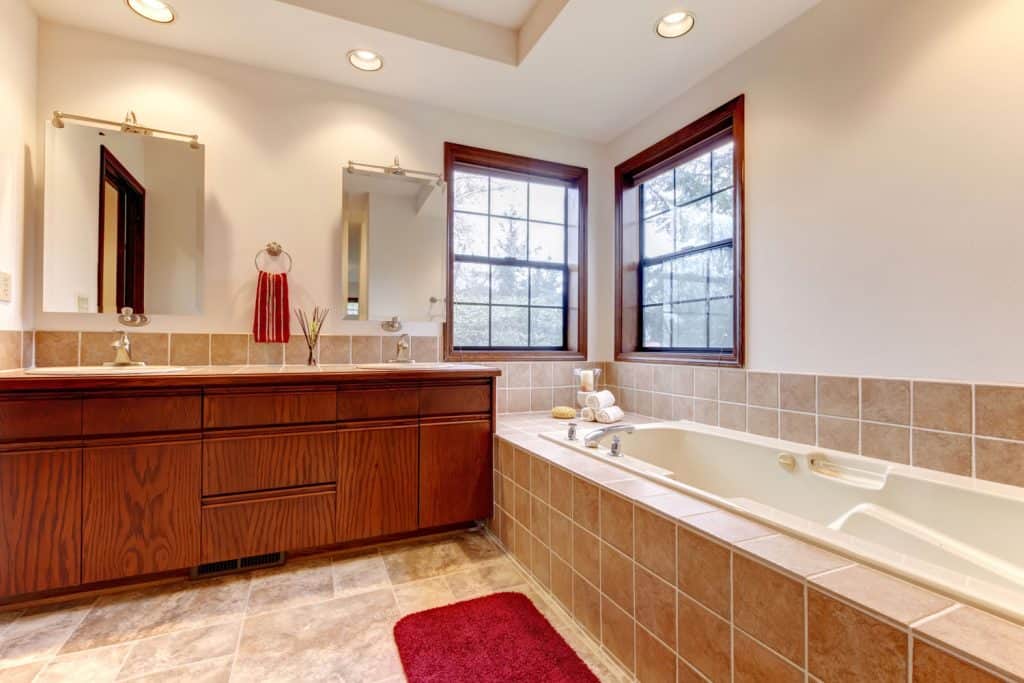
Bathtubs are often situated near a window, and some homeowners dislike the idea of surrounding a window with tile. Choosing to tile to the window, like the image example above, or about halfway up the window, like below, is a popular choice.
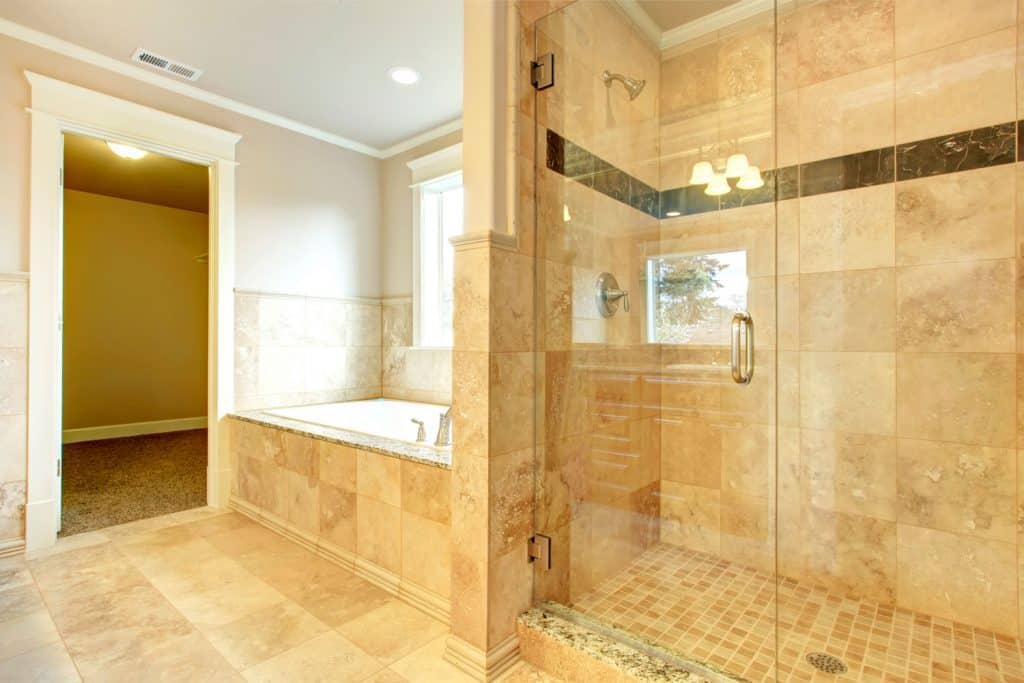
It's also a popular choice if you have high ceilings. With high ceilings, there's no need to tile all the way up to the ceiling. Tiling to the ceiling gives the illusion of height which isn't necessary if you already have high ceilings. It's still a good idea to tile far enough up to protect your walls, though.
Freestanding Tub
With freestanding tubs, whether you tile the wall to the ceiling might depend on the placement of the tub. While some freestanding tubs are placed near walls, others are placed perpendicular to the walls and further towards the center of the room.
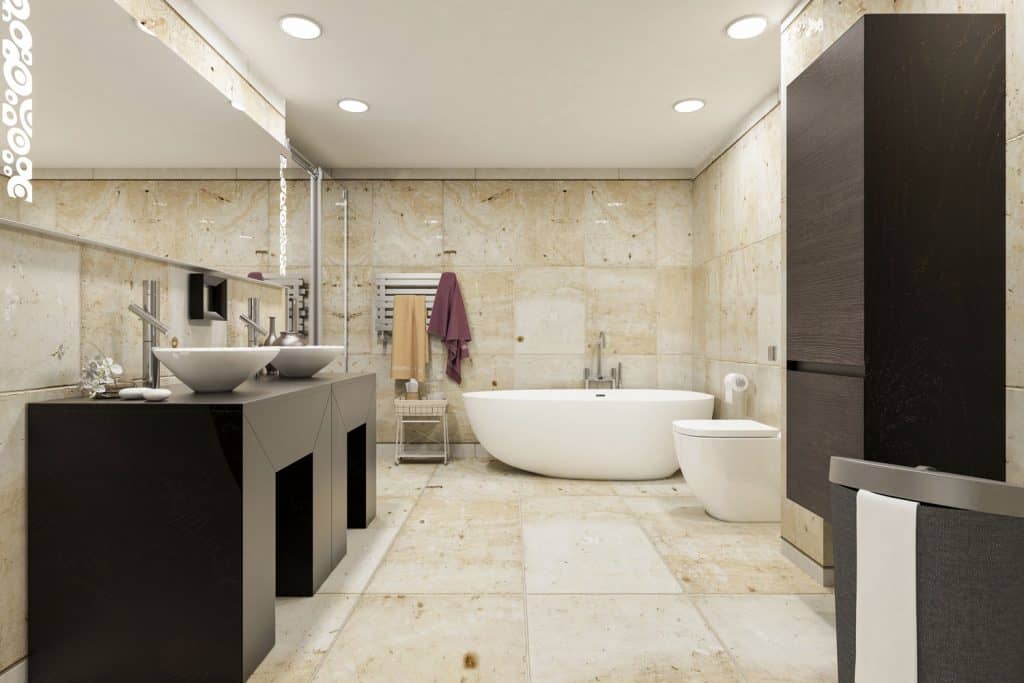
Tiling all the way to the ceiling gives the bathroom a more modern look. This tub is placed in the corner near the walls.
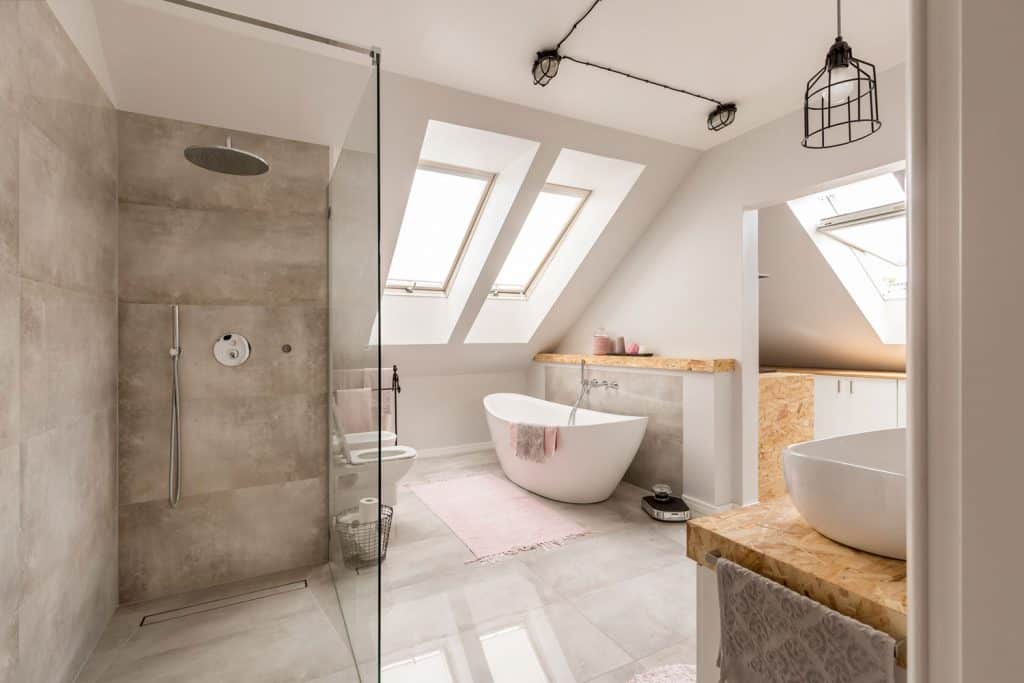
With this tub, the wall nearest the tub is partially tiled to protect it from any splashes. But the designer didn't see a need for tile on the far end of the tub.
If it's possible, tiling to the ceiling should be your first choice. There are almost no cons to tiling the additional space, but there are definitely pros. However, you can style your bathroom the way you want, and if you prefer the way it looks with less tile, then you can make that work too.
How close to the tub should I tile?

So by now, you probably have a good idea of how high you want your tile to go, but what about in the other direction? How close to the tub should you tile?
How close to the tub you decide to tile is a cosmetic choice. You can choose 1/16", 1/8", 1/4", or whatever other size spacers you like. Most people prefer the look of a thin grout line, but 1/16" may be tricky if you're not a pro. A good middle ground is 1/8". If you're not sure how much space to leave, a good rule is to leave the same amount of space between the tub that is between each tile.
Click here to see COSMOS 1/8 Inches Wide Tile Spacers on Amazon.
Do you tile the wall before fitting the bathtub?
You should tile the wall after you have fitted the bathtub. In fact, if you're doing a complete bathroom remodel or installation, fitting the bathtub or shower is one of the very first steps.
Just be sure to cover your tub to prevent it from getting damaged while you finish tiling and finish the rest of the bathroom. If, for some reason, you'd prefer to tile the wall before fitting the tub, make sure to at least have the tub in place, so you know exactly where to tile to.
Should bathroom wall tiles be vertical or horizontal?
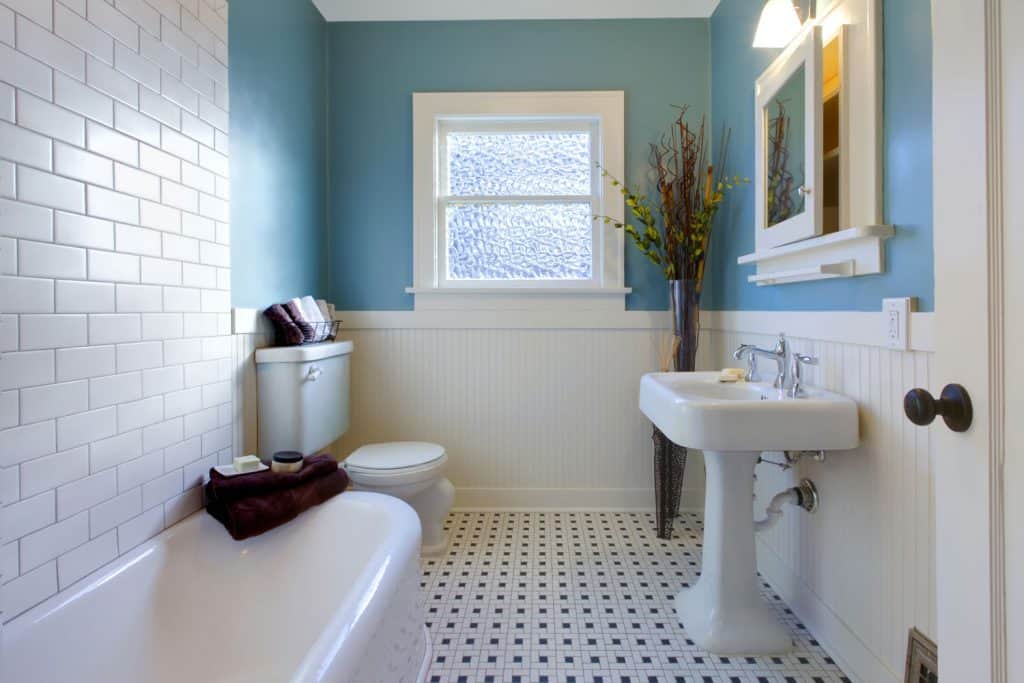
It is more common to see bathroom wall tiles placed horizontally in correlation with the length of the tub, but there are no set rules that dictate which direction tiles have to be placed. Whether you place them vertically or horizontally will not change how they function. However, you can use direction to create an illusion of space.
Horizontal tiles can make a room seem wider. If you have a bathroom that has the height but not the width, placing your tiles horizontally can trick the eye into thinking the room is longer. Similarly, vertical tiles can make the room look taller. If you have a small bathroom with less space between the floor and ceiling than you'd like, vertical tiles can help.
That being said, illusions are just that, and neither direction will actually change the size of your bathroom. The deciding factor should be whichever direction you prefer.
Another design question you might have is whether the floor and wall tiles should match. Well, we have a blog post for that too! Check it out here: "Should Bathroom Floor And Wall Tiles Match?"
Final Thoughts
We've given you lots of examples and reasons you may or may not want to tile all the way up to the ceiling. Hopefully, you now have a better idea of how you want to proceed with your own bathroom design. Happy renovating!
If you're wondering how much bathroom tiles might cost you, check out our other blog post here: "How Much Do Bathroom Tiles Cost?"

